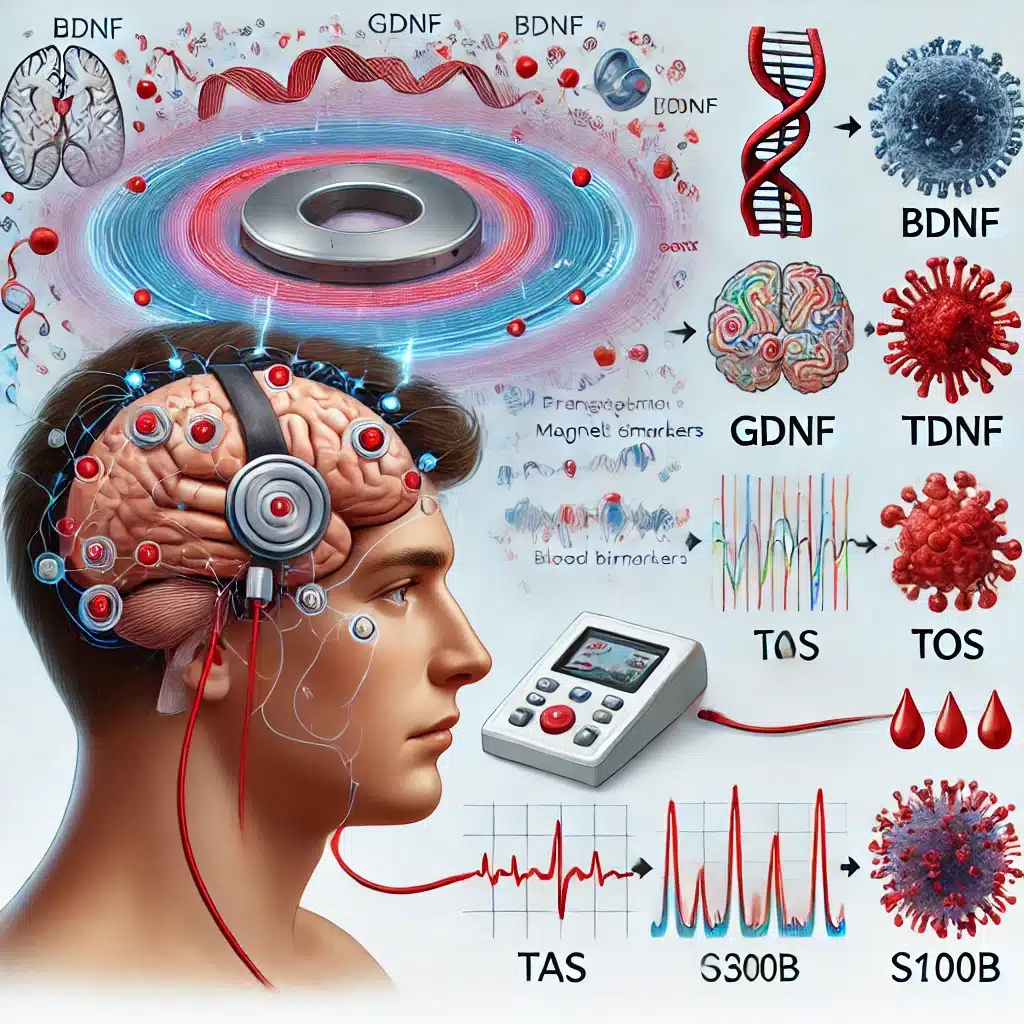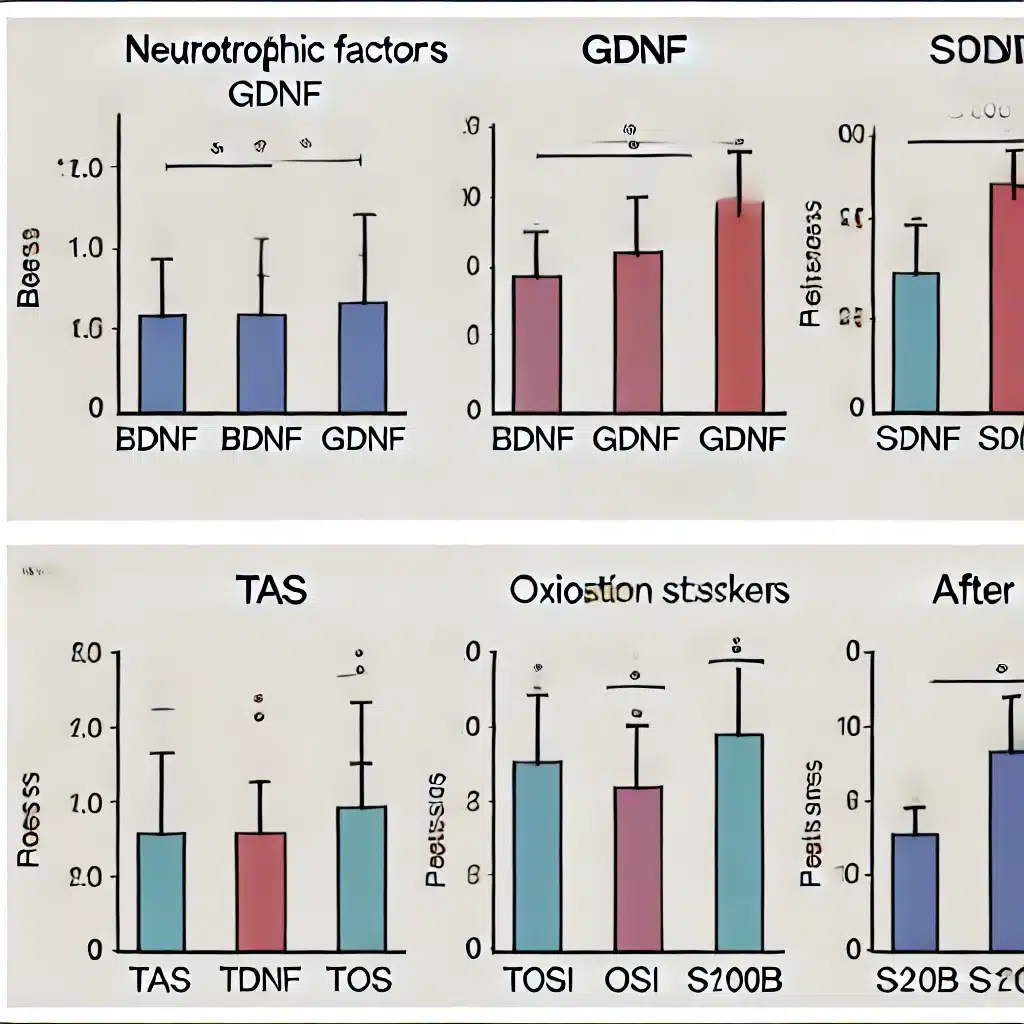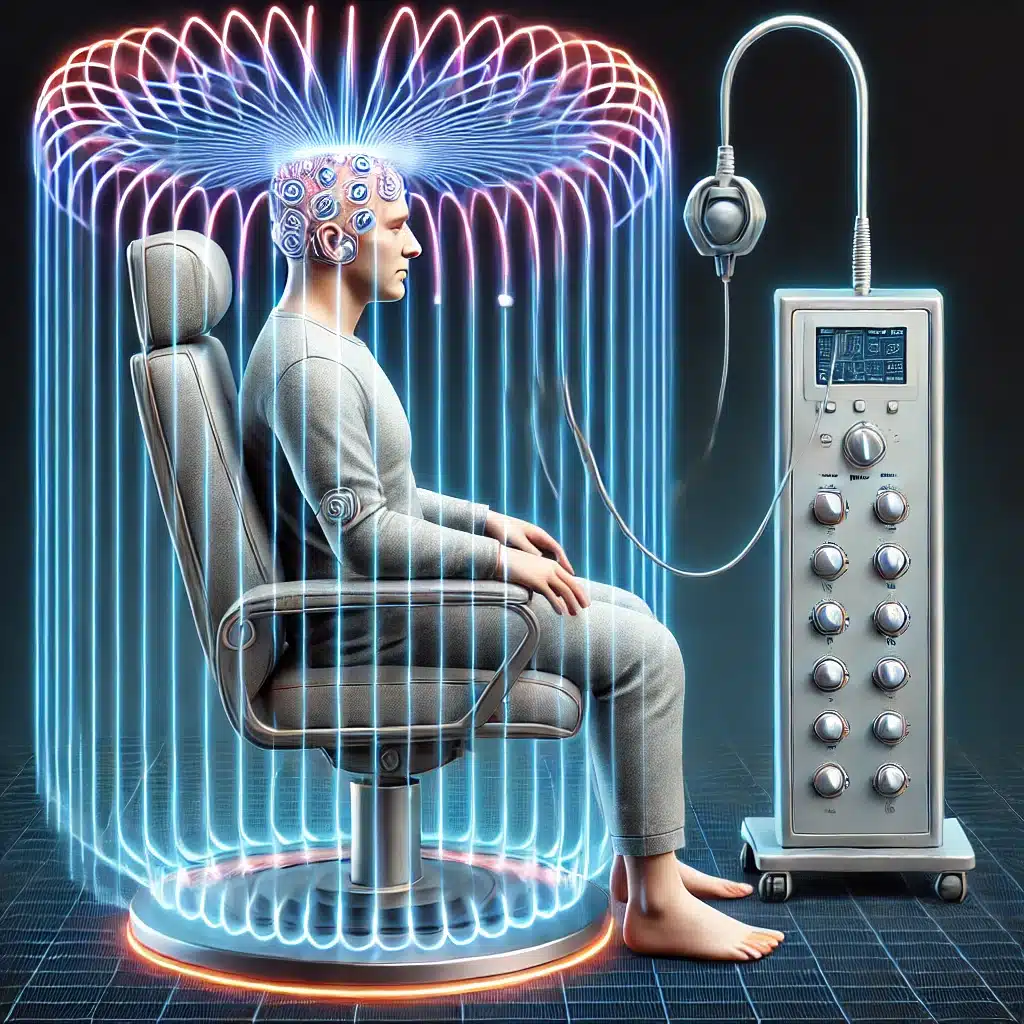Repetitive transcranial magnetic stimulation (rTMS) therapy improves key biochemical markers in major depressive disorder (MDD) patients, indicating its effectiveness as an antidepressant treatment.
Highlights:
- Improved Antioxidant Levels: rTMS therapy significantly increased total antioxidant status (TAS), total thiol (TT), and native thiol (NT) levels in MDD patients compared to their levels before treatment.
- Reduced Oxidative Stress: The therapy notably decreased total oxidant status (TOS), oxidative stress index (OSI), and disulfide (DIS) levels, indicating reduced oxidative stress in patients post-treatment.
- Enhanced Neurotrophic Factors: Levels of brain-derived neurotrophic factor (BDNF), glial cell line-derived neurotrophic factor (GDNF), and allopregnanolone (ALLO) were significantly higher after rTMS therapy, promoting better brain health and function.
- Lowered Inflammatory Marker: S100 calcium-binding protein B (S100B) levels, which are associated with brain inflammation, were reduced following rTMS therapy.
- Potential Antidepressant Mechanism: The changes in these biochemical markers suggest that rTMS reduces oxidative stress, restores balance in the brain’s chemical environment, and supports neuroplasticity, contributing to its antidepressant effects.
Source: Translational Psychiatry (2024)
Repetitive Transcranial Magnetic Stimulation (rTMS) & Depression (Overview)
History of rTMS
Repetitive transcranial magnetic stimulation (rTMS) has its roots in the broader field of transcranial magnetic stimulation (TMS), which was first developed in the 1980s.
TMS emerged as a non-invasive method to stimulate the brain using electromagnetic fields.
The technique was initially used for diagnostic purposes to map brain function.
By the mid-1990s, rTMS, involving repeated sessions of TMS, was being explored as a therapeutic tool for neurological and psychiatric conditions, most notably for major depressive disorder (MDD).
In 2008, the FDA approved the use of rTMS for treatment-resistant depression, marking a significant milestone in its clinical application.
How rTMS Works
rTMS involves the use of a coil placed on the scalp that generates a rapidly changing magnetic field.
This magnetic field induces electrical currents in specific brain regions, most commonly the left dorsolateral prefrontal cortex (DLPFC), which is associated with mood regulation.
The repetitive nature of the stimulation modulates neuronal activity, enhancing or inhibiting neural circuits to achieve therapeutic effects.
Sessions typically last about 30-40 minutes and are administered daily over several weeks.
Mechanisms of rTMS
- Neuronal Activation: rTMS directly stimulates neurons, altering their firing patterns and enhancing synaptic plasticity. This helps in correcting abnormal neural activity associated with depression.
- Neurotrophic Effects: rTMS increases the levels of neurotrophic factors such as BDNF and GDNF, which support neuron growth and survival, thereby promoting neural health and plasticity.
- Reduction of Oxidative Stress: The therapy improves antioxidant defenses and reduces markers of oxidative stress, which are often elevated in depressed individuals.
- Regulation of Neuroactive Steroids: rTMS modulates levels of neuroactive steroids like allopregnanolone, which affect mood and anxiety through their action on neurotransmitter systems.
- Anti-inflammatory Effects: By reducing levels of inflammatory markers such as S100B, rTMS helps decrease brain inflammation, which is implicated in the pathophysiology of depression.
Efficacy of rTMS
Numerous clinical trials and meta-analyses have demonstrated the efficacy of rTMS in treating depression, particularly in patients who have not responded to traditional treatments like medications or psychotherapy.
Studies show that rTMS can lead to significant improvements in depressive symptoms, with some patients experiencing remission.
The therapy is generally well-tolerated, with the most common side effects being mild headaches and scalp discomfort.
Its non-invasive nature and minimal systemic side effects make rTMS an appealing option for many patients.
Conclusion: TMS in MDD & Effect on Biomarkers
This study highlights the promising effects of repetitive transcranial magnetic stimulation (rTMS) in treating major depressive disorder (MDD) by altering key blood biomarkers.
rTMS therapy significantly increased neurotrophic factors like BDNF and GDNF, which are vital for neural growth and repair, while reducing oxidative stress markers and inflammation-related proteins such as S100B.
These biochemical changes suggest that rTMS not only alleviates depressive symptoms but also enhances overall brain health.
The findings underscore the potential of rTMS to serve as a personalized treatment option, allowing clinicians to monitor and adjust therapy based on specific biomarker responses.
Additionally, the study opens avenues for further research into the use of rTMS for other neuropsychiatric conditions and its long-term benefits.
Overall, rTMS represents a valuable tool in the fight against depression, offering hope for improved outcomes and quality of life for patients.
References
- Study: Altered blood parameters in “major depression” patients receiving repetitive transcranial magnetic stimulation (rTMS) therapy: a randomized case-control study (2024)
- Authors: Beyza Nur Ozkan et al.









